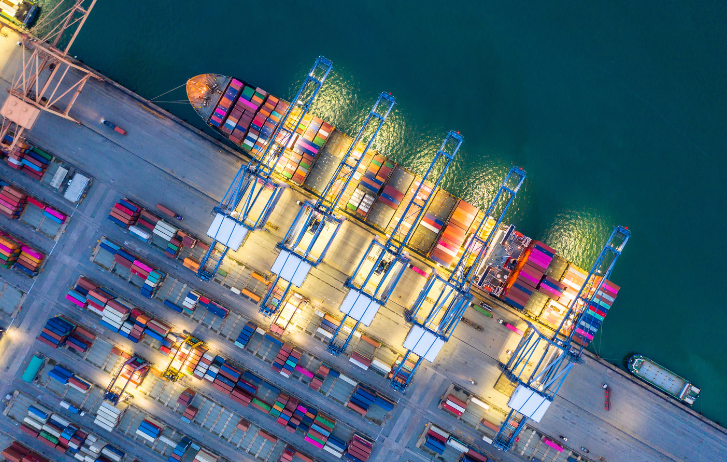
How To Get Your Import Strategy Up To Speed
By FedEx | October 14, 2024
Imports can be tricky to navigate for first-time businesses. Whether you’re an experienced shipper or new to managing cross-border deliveries, check out our import 101 guide.
- Asia Pacific is predicted to be the fastest-growing region for imports in 2024.
- But with complicated customs and regulations procedures, many businesses struggle to build an efficient import strategy.
- Understanding the key ingredients for import process optimization is essential to import success and cross-border growth.
Picture this: your retail business strategy is solid. You’ve sourced some great products. You’ve done the research, and you’re confident of healthy consumer demand. You’re clear on how to market your goods, which sales channels to use, and how to ship your products to buyers. But there’s one thing you’re not experienced in: navigating imports.
Importing can be a tricky process to nail, particularly for first-timers new to sourcing from overseas. Common mistakes include not understanding import regulations, struggling with documentation and customs, underestimating logistics complexities or timeframes, and lack of insurance.
With Asia Pacific poised to be the fastest-growing region for imports in 2024, the need for import process optimization will be key to business growth.
Importing 101: A guide for SMEs
One thing to remember is that importing is a step-by-step process. There are many moving parts to juggle. But challenges can be turned into opportunities. Each step offers a chance to streamline, optimize and unlock greater efficiency.
With the right import strategy, you can reduce costs and forge stronger ties with suppliers and logistics providers. Import management solutions are also available for SMEs to tap. Whether you’re a first-time importer or an experienced hand looking for tips on improving, check out our guide to getting it right:
1. Straightening out the paperwork
Regulations, paperwork, customs, tariffs; imports can be an administrative headache for the inexperienced. Businesses today need smarter, more efficient ways to manage the complexities of cross-border trade.
One of the most crucial things for SMEs to understand is the regulatory landscape. Each country has specific import regulations, and compliance is mandatory. Getting it right means you’re not risking penalties, delays or unforeseen costs. Here are a few points to consider:
- Make sure you understand both the export regulations of the country you’re buying from and the import rules for the market you’re bringing goods into.
- Rules change. Keep an eye on government websites and subscribe to trade and supply chain news to stay up to date.
At FedEx, our clearance specialists are here to handle the heavy lifting and streamline the clearance process for you. Our newly launched FedEx Import Tool - an automated, single-window solution - also provides clear, market-specific guidelines to enhance your experience and make it hassle-free.
2. Monitor and manage risk
Importing involves a multitude of risks, such as:
- Risk to product: Theft, loss or damage.
- Risk to revenue: Everything from supplier defaults and delays to not managing your import supply chain efficiently impacts your bottom line.
- Risk to business: Import issues can harm your business reputation, making suppliers and partners less willing to work with you. This might compromise your sales and inventory, and even reduce the value of your business to investors.
At its worst, if you’re not compliant with import regulations for example, failing to manage risk can lead to businesses shutting down over legal action.
To mitigate import risk, you should properly vet suppliers, develop a risk matrix to identify all potential risks, and secure comprehensive insurance coverage.
3. Do your supplier homework
One of the fastest ways to make your import strategy more efficient is to find suppliers you can trust. Using suppliers that are export-compliant and dispatch your goods safely and without delays can streamline your overall business operations.
Here are three things you can do to strengthen your supplier network and make imports easier:
- Diversify your supplier pool, so you aren’t reliant on a single source.
- Fully research your supplier’s operations. Consider conducting a due diligence check to review their history and verify their credentials. If possible, visit them in person, so you can see firsthand the quality of their products and production output.
- Maintain excellent supplier relationships. This also extends to logistics providers and customs and government officials. Building a supportive import network of reliable partners gives you access to faster customs clearance and better payment and delivery terms.
4. Digitize and streamline with the right tools
Today, digital tools and solutions have simplified imports by reducing paperwork and taking care of some of the admin.



In Asia Pacific, our new FedEx Import Tool transforms and provides greater visibility into the import process.
As SMEs expand internationally, the FedEx Import Tool can reduce manual tasks across customs documentation and regulatory compliance. The tool is currently available for FedEx customers in Australia, Japan, Korea and Taiwan, and will soon be rolled out to additional APAC markets including Malaysia, Thailand, Indonesia, Philippines, Singapore, and New Zealand.
The benefits of using the FedEx Import Tool for businesses
The FedEx Import Tool represents a significant advancement in supply chain efficiency. By streamlining import processes, it gives businesses more time to focus on optimizing other essential aspects of their operations. The new tool offers:
- A self-service platform that simplifies your workflow by centralizing document management and shipment tracking.
- A dashboard offering greater visibility and transparency into every stage of import shipments.
- Proactive notifications to expedite clearance and minimize delays.
- Round-the-clock monitoring that allows shippers and importers to track shipments for up to 90 days after pickup.
The global trade environment is constantly shifting. Importers need to stay up-to-date with new regulations, changing tariffs, and geopolitical disruption. Successfully navigating imports depends on your ability to stay agile, from managing supplier decisions to adapting to cost fluctuations.
At FedEx, we’re import experts, committed to digital innovations that solve customer problems faster. Import management solutions like the FedEx Import Tool can help demystify and accelerate the import process. Combined with the reach of our global network and dedicated customer support team, importers can unlock extra efficiency, transparency, and reliability.
For more tips on how you can streamline your import strategy, check out our dedicated imports guide here.
SHARE THIS STORY
- Generative AI: A New Frontier
- How To Ship A Giant Panda
- How To Make Freight Shipments Work For Your Small Business
- The Rise Of Intra-Asia Trade: Opportunities In The China-Southeast Asia Corridor
- Where Do Old Planes Go When They Retire?
- What’s So Dangerous About Coconuts? Your Guide To Dangerous Goods Logistics
Sign up now and save on your shipping rates!
Sign up now and earn discounts by shipping instantly with FedEx Ship ManagerTM at fedex.com.
Recommended For You

The Online Mall Bringing Japanese Brands To The World
An e-commerce platform curating Japanese products and souvenirs is experiencing a surge in cross-border sales as interest in Japanese brands grows.
Read More
Decoding The E-Commerce Landscape In China, India And Japan
Our recently published e-books for the China, Japan and India markets explore trends and opportunities for Asia Pacific SMEs.
Read More
Numata Nori, The Fourth-Generation Edible Seaweed Shop Winning Global Fans
Japanese nori is becoming more popular overseas as one of Japan’s key food exports. Learn how e-commerce and tourism are helping to boost its growth.
Read More

